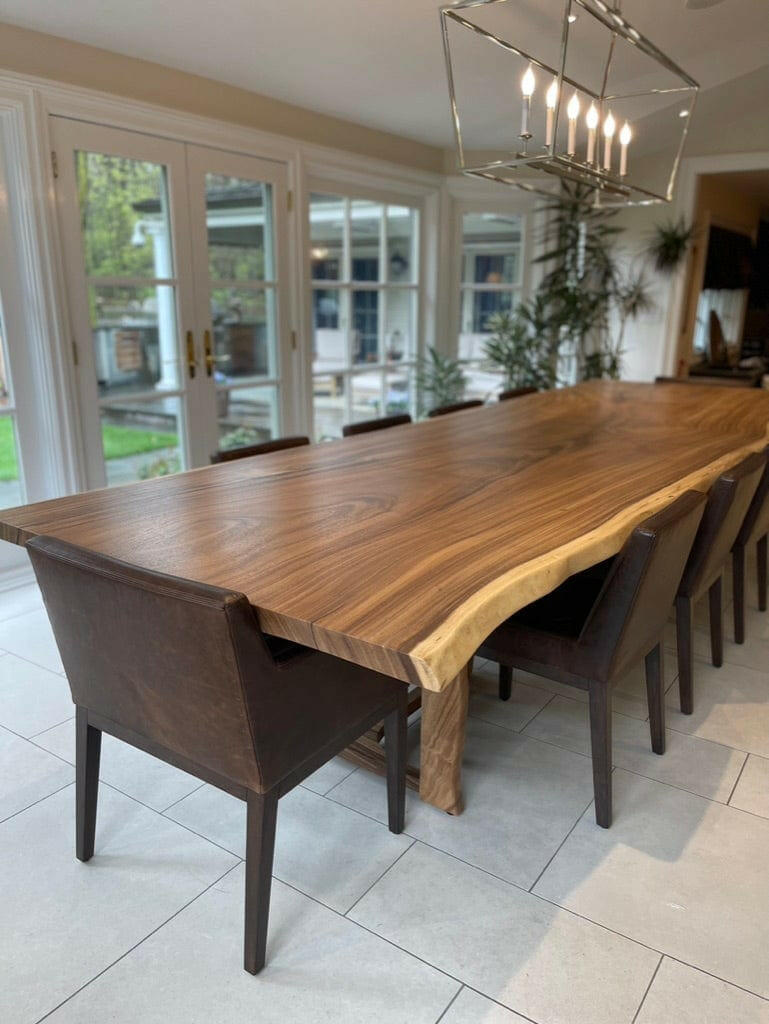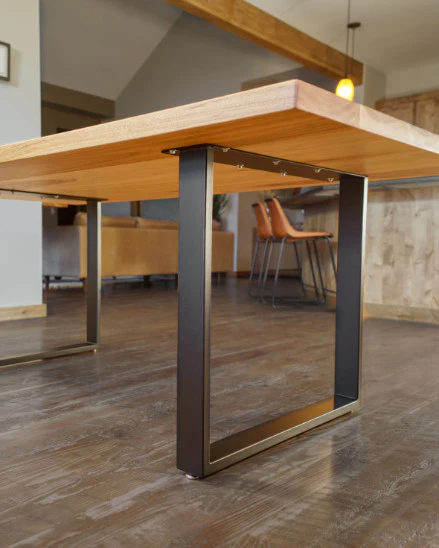Exactly how to Pick the Perfect Dining Room Table Legs for Your Home Style
Exactly how to Pick the Perfect Dining Room Table Legs for Your Home Style
Blog Article
A Thorough Check Out Table Leg Styles: Locating the Suitable Match
Selecting the appropriate eating table leg style is essential for both aesthetic allure and functional performance. Traditional 4 legs use timeless elegance and security, while the pedestal base provides boosted legroom and a contemporary appearance. For those with bigger tables, trestle legs make sure tough support, whereas hairpin legs present a mid-century modern ambiance with their minimalist layout. The x-shaped legs mix contemporary design with enhanced stability. Each of these alternatives brings distinct advantages, making the option greater than simply a matter of choice. Explore better to find which design completely enhances your dining room and way of life.
Typical Four Legs
Amongst the numerous kinds of dining table leg styles, the conventional four-leg design remains a timeless choice for many households. 4 legs provide balanced assistance, making sure the table remains steady and qualified of birthing considerable weight (dining room table legs).
From an aesthetic perspective, the traditional four-leg layout can be conveniently adapted to various indoor designs. Whether crafted from wood, metal, or a mix of products, these legs can be elaborately carved, streamlined and minimalistic, or anything in between. Their convenience enables them to match both rustic and contemporary setups effortlessly.
Furthermore, the straightforward structure of the four-leg layout assists in simplicity of movement and positioning within a room. Unlike even more complicated bases, this style decreases obstructions, providing enough legroom for diners. In summary, the standard four-leg table leg design marries sustaining sophistication with useful capability, making it an astute choice for those seeking both form and function in their eating furniture.
Stand Base
Commonly celebrated for its sophisticated and space-efficient design, the stand base is a distinguished choice to the conventional four-leg arrangement in table leg designs. This distinctive base normally features a single main column supporting the tabletop, which can differ in form, from ornately carved timber to sleek, contemporary steel. One of the main benefits of the stand base is its capacity to maximize legroom and seating versatility. Without edge legs, diners are afforded higher liberty of movement, making it a suitable choice for round and oval tables that advertise even more intimate and comprehensive gatherings.
Furthermore, the stand base's main assistance can take care of significant weight, allowing for using heavier tabletops, such as marble or thick hardwood. This stamina combined with its aesthetic adaptability makes the stand base a prominent option in both standard and modern indoor setups. It can effortlessly incorporate with different style styles, from traditional beauty to minimalist modernity. The central column itself offers a canvas for intricate layouts and imaginative expressions, including an aspect of visual passion under the table. In recap, the pedestal base combines capability with design, making it a fine-tuned and useful option for varied dining environments.
Trestle Legs
Trestle legs give a robust and timeless structure for dining tables, defined by their horizontal cross-bracing and tough support light beams. Originating from middle ages times, this style has progressed yet kept its crucial structure, making it a seasonal favorite in both typical and contemporary setups. The central trestle light beam, frequently supported by 2 or even more upright messages, uses extraordinary informative post stability, enabling for bigger table lengths without the demand for additional legs.
A considerable benefit of trestle leg tables is the sufficient legroom they supply. Unlike tables with four edge legs, the lack of obstructions at the table's sides gives unimpeded area for chairs and restaurants, enhancing convenience and accessibility. This makes trestle tables optimal for suiting larger events, whether in an eating area or a banquet hall.
The visual convenience of trestle legs is noteworthy. Offered in a selection of products such as wood, metal, and composite, they can be completed to match a wide variety of interior styles. From rustic farmhouse to streamlined modern designs, trestle legs can be personalized to fit specific preferences. Their long-lasting appeal and functional benefits make trestle legs a compelling option for those seeking both design and usefulness in their eating table.
Hairpin Legs

The appeal of barrette legs exists in their simplicity and adaptability - dining room table legs. Available in a variety of products, consisting of steel and brass, they can be finished in many shades to match various interior styles. Whether coupled with a rustic wooden tabletop or a modern glass surface area, hairpin legs effortlessly mix capability with a touch of vintage charm
Longevity is another noteworthy attribute of barrette legs. Despite their delicate appearance, these legs are crafted to birth significant weight, ensuring the table stays steady and safe and secure. Additionally, they are relatively simple to set up, making them a preferred selection for do it yourself fanatics and professional furniture makers alike.
X-Shaped Legs

Created from materials such as steel, timber, or a mix of both, X-shaped legs can be tailored to match numerous design choices. Steel legs often provide a streamlined and industrial feeling, perfect for loft-style houses and modern-day dining spaces. On the various other hand, wood X-shaped legs offer a warmer, a lot more rustic appeal, appropriate for farmhouse or diverse insides. The flexibility in products permits property owners to personalize their eating tables to better fit their total style system. site web
In addition, the design behind X-shaped legs ensures even weight distribution, lessening the threat of tottering and improving sturdiness. This makes them particularly appropriate for larger eating tables that call for added assistance. Fundamentally, X-shaped legs mix sensible design with modern visual appeals, making them an ageless option for diverse dining environments.
Conclusion
An extensive understanding of table leg styles reveals the distinct characteristics and benefits of each design. Traditional 4 legs supply security and ageless charm, while pedestal bases offer legroom and a streamlined look. Trestle legs make certain durable support for larger tables, and hairpin legs present a mid-century modern-day visual. X-shaped legs integrate contemporary design with enhanced security. Choosing the suitable leg style ensures both useful and visual fulfillment in any type of dining room.
Report this page